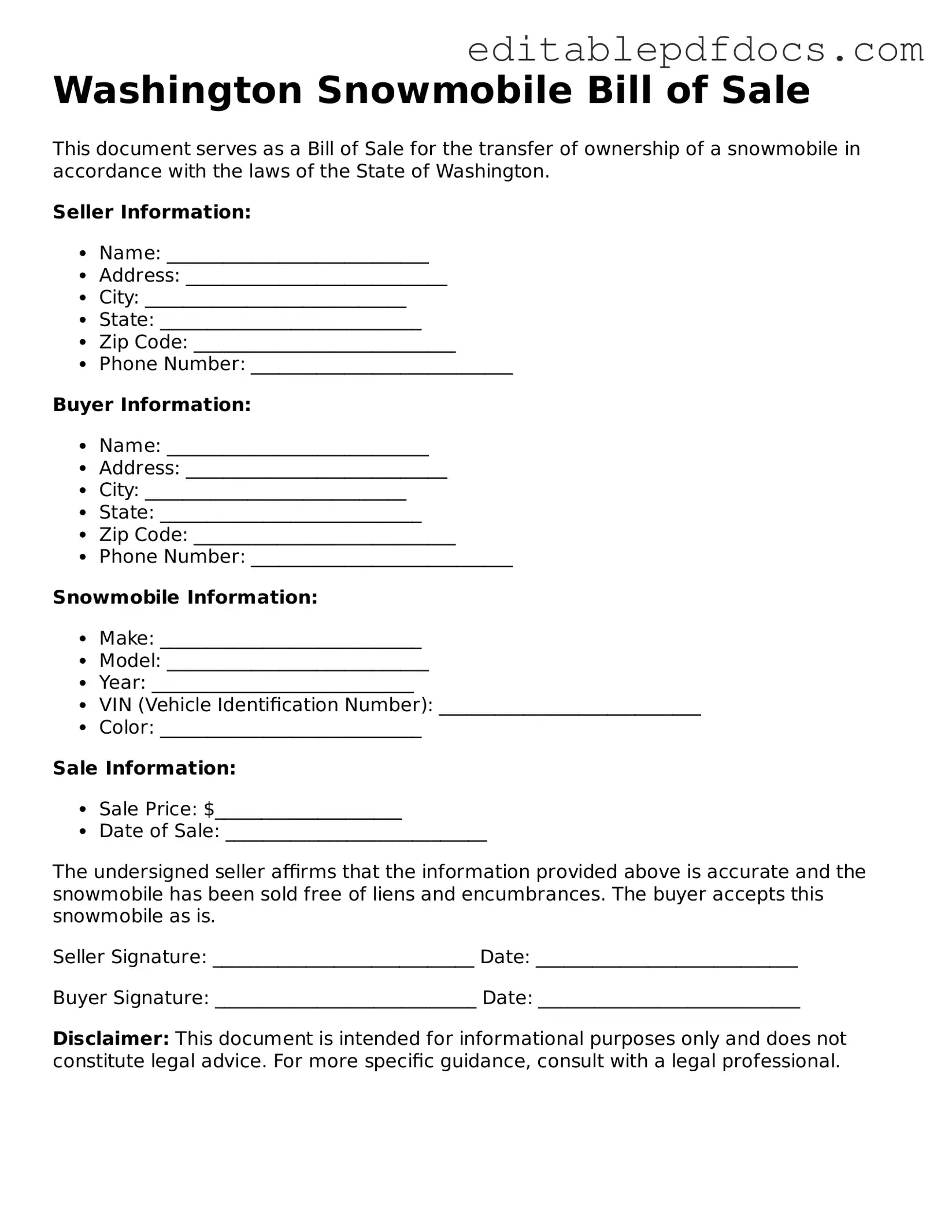When it comes to filling out the Washington Snowmobile Bill of Sale form, many individuals unknowingly make errors that can complicate the transfer of ownership. One common mistake is failing to include the correct date of sale. This date is crucial as it establishes when the ownership officially changes hands. Without it, disputes may arise regarding ownership or liability.
Another frequent error is neglecting to provide accurate information about the snowmobile itself. This includes details such as the make, model, year, and Vehicle Identification Number (VIN). Inaccurate or incomplete information can lead to confusion and potential legal issues down the line. Buyers and sellers alike should ensure that all details match the documentation associated with the snowmobile.
Many people also forget to include the purchase price on the form. While it may seem trivial, this figure is significant for both parties. It serves as a record of the transaction and may be necessary for tax purposes. Omitting this detail can lead to complications, especially if the transaction is later scrutinized by tax authorities.
One of the more serious mistakes involves failing to have both parties sign the document. A Bill of Sale is only valid when both the seller and buyer provide their signatures. Without these signatures, the document lacks the legal weight necessary to enforce the sale. It is essential to double-check that all required signatures are present before submitting the form.
Another area where individuals often stumble is in the witness requirement. Washington law does not mandate a witness for a Bill of Sale, but having one can provide an extra layer of security. Failing to consider this can leave one party vulnerable if disputes arise later. Including a witness can help verify the transaction took place as described.
People sometimes overlook the importance of providing contact information for both parties. Including phone numbers and addresses can facilitate communication should any issues arise after the sale. Without this information, reaching out to the other party may become difficult, complicating any potential resolution.
In addition, some individuals may not understand the implications of using a generic Bill of Sale template. While templates can be helpful, they often lack specific language tailored to snowmobiles. Using a generic form can lead to misunderstandings about the terms of the sale, so it is wise to use a form specifically designed for snowmobiles.
Furthermore, individuals may forget to keep a copy of the completed Bill of Sale for their records. This document serves as proof of the transaction and can be invaluable in the event of future disputes or questions about ownership. Without a copy, one may find themselves at a disadvantage should any issues arise.
Lastly, people sometimes rush through the process, leading to careless mistakes. Taking the time to carefully review the form before submission can prevent many of the issues mentioned above. A thorough review ensures that all information is correct and complete, ultimately making the transaction smoother for both parties involved.
